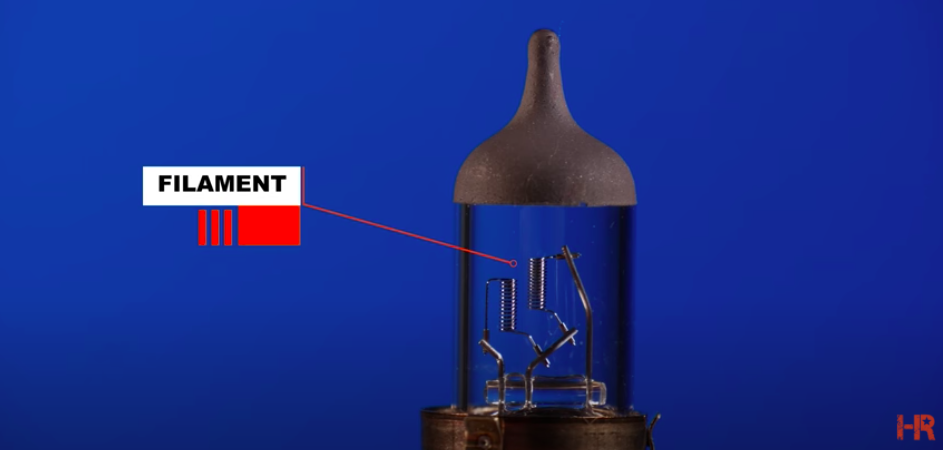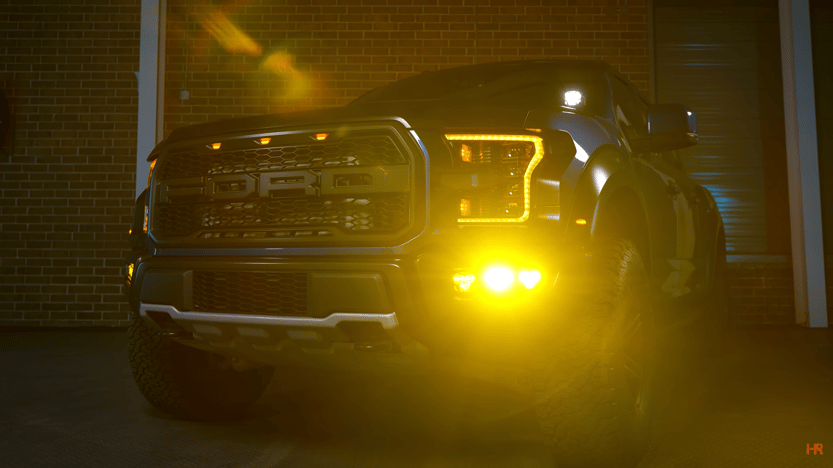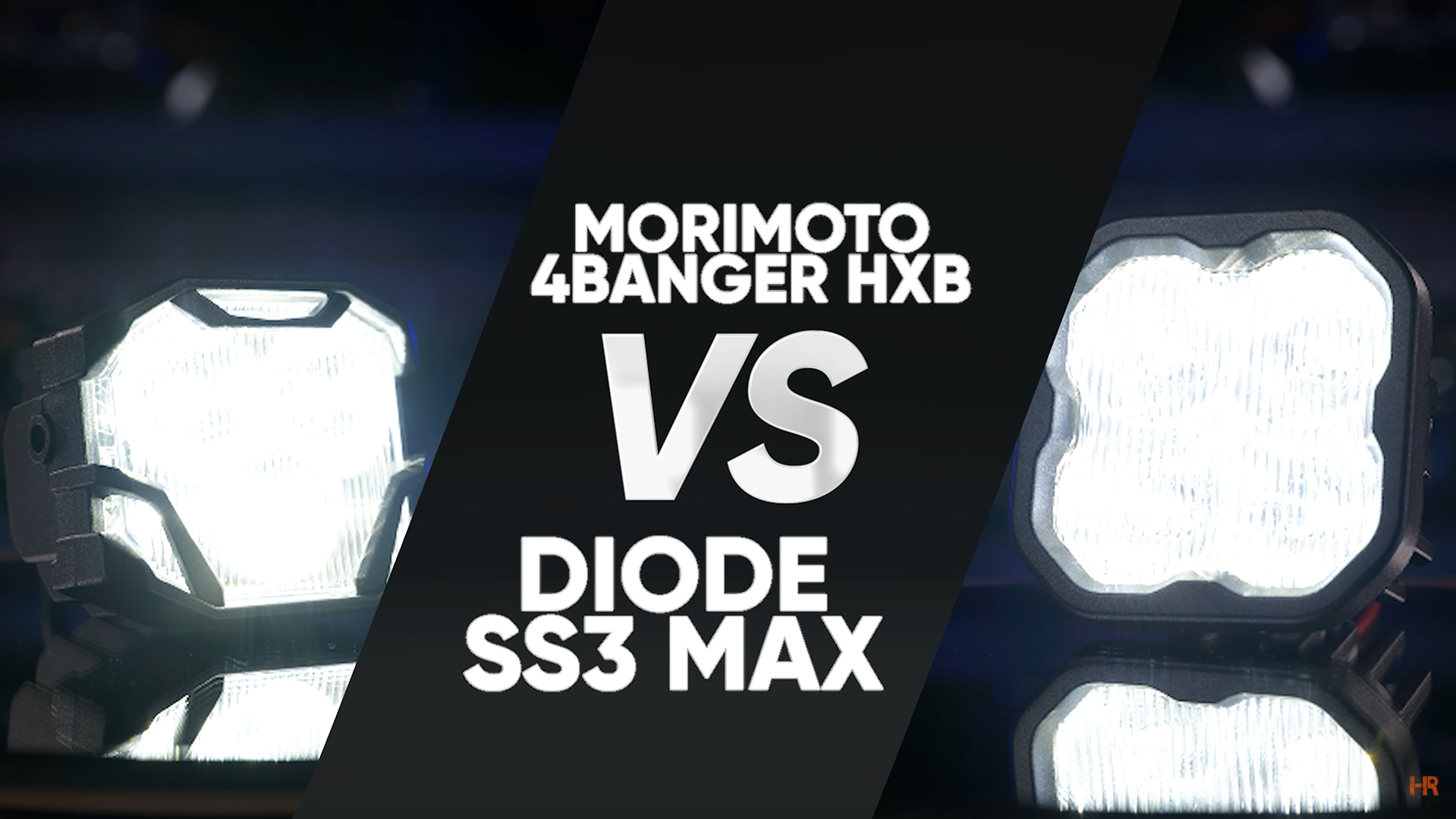Why Should You Multi-Sided LED Headlight Bulbs?
If you're in the market for LED headlight bulbs, you've probably seen these 360° or three-sided or four-sided LED headlight bulbs. They do not work, and in this video, I'm going to tell you why. You should be looking for something with just two sides, a very thin centerpiece, and this type of chip.
DISCLAIMER: In the United States, lamps, reflective devices, and associated equipment are regulated by the US Department of Transportation (DOT). Even though these types of LED lights can be used in place of an original halogen light bulb, it is not legal to use on vehicles registered for on-street use. This type of modification can only be done when used in a fog lamp application, dedicated off-road application, or in jurisdiction outside the USA where this is allowed. For more information on how to determine if this type of product is safe to use, and legal to use on public roadways in the USA, Click Here for a more detailed breakdown of compliance.
In this article we are going to test these 360° LED headlight bulbs in a few different headlight housings and show you how bad they really are and why you should stay away from anything with three or four sides. We're going to put them in different headlight housings and test the brightness with a digital lux meter to show you just how bad the beam pattern is and how much less bright they are than the original halogen bulb. But first, let me explain why.
The Light Source Point and Reflector
The reason that these bulbs with three or four sides don't work right has to do with the relationship between the light source point and the reflector of the headlight.
Let me explain:
A headlight housing is designed with reflective surfaces in specific positions to bounce light off the halogen light bulb. Each one of these little faces is a polished mirror surface. This reflector is designed because they know precisely where the filament will be positioned on the halogen light bulb. After all, all halogen light bulbs are built the same.

(Above: Headlight bulb filament)
So, if you take a halogen light bulb and you put it into the headlight housing, it's going to work right. If you have the headlight bulb the wrong way, the mirrors will not do their job. If the bulb is too far in, it's not going to be positioned right. The same occurs if it's too far out. If the filament is off to one side or this side, the filament light source's angle to each of these tiny mirrors will be out of focus.
So, it's not just a coincidence that putting the correct bulb in the right headlight works. These mirrored reflective surfaces were explicitly designed for this light bulb.
What About A 360-Degree LED?
When you look at a halogen light bulb, what is inside is a wire-wound filament, and it's tiny, and it's 360°. So, it makes sense that somebody might say, "Well, I want to use a 360° light source LED bulb," but there's a whole other problem.
The filament is one light source.
The LED on this one has four, and they're different sizes, and they're in the wrong spot. When I take this digital caliper and measure this filament's width, it comes in at 1.45 mm. Now, if I take the same caliper and measure this LED bulb's width, it comes in at almost 13 mm. That's why it does not work.

(Above: Measuring the height of the bulb filament width - 1.45mm)
(Above: Measuring the width of the LED bulb width - 13 mm)
The height of this filament (above) comes in at about 4.5 mm. The height of this LED light source (shown below) comes in at about 11 mm. So, if you put something that's ten times as wide and three times as tall inside a housing designed for this, you're going to have multiple out-of-focus light sources. That's why they do not work. It's impossible to build something like this that works correctly in something designed like this.
(Above: LED light source height comes in at about 11 mm)
That's why we look for bulbs like the GTR Lighting Ultra 2. It's not an exact replica of a filament light bulb, but it's about as close as the technology gets us today. If we take one of these bulbs apart, we see a thin dual-sided PCB with an LED chip that looks similar to the original halogen bulb's shape and size.
(Above: GTR Lighting Ultra 2)
If we measure the width of this light source, it comes in at 4.6 mm. That's a lot better than the 360° bulb that comes in at almost 13 mm.
If we look at another example, like the Diode Dynamics SL1 (below), and we take it apart, again, you have a dual-sided PCB with an LED chip that looks in a similar shape and size to the halogen bulb. The thickness is 2 mm, 2.92, to be exact. The height of the LED chip is 5, 4.97 mm. And the width is 2 mm.
(Above pictured: Diode Dynamics SL1)
If you look at the bulb from Xenon Depot (below), the thickness is 2.68 mm. If we measure the Morimoto 2Stroke, the thickness comes in at 3.5 mm. All of these two-sided bulbs with little, tiny, itty-bitty LED chipsets work a lot better to mimic the original halogen footprint of your stock light bulb.
Even ones like this (pictured below) that are 360° with four sides still can't compete. And I'll demonstrate why you would think something like this would work, but it doesn't.
Filament Shape Needs To Match Space In The Reflector
Here's another interesting example: This bulb with a cone-shaped 360°. It is way thicker than the original halogen filament is. It's just not going to work.
If your light source doesn't look like the filament shape is not precisely positioned in the same spot in space in the reflector, it's not going to work. Instead of having a narrow beam pattern with a single focus hotspot and very little glare above the cutoff, you're going to have these great big wide and tall beams that have no focus for them and blind everybody else.
I'm going to prove it by first showing you the halogen bulb's beam pattern and then these five LEDs.
(Left to right: A silver 360° bulb, black 360° bulb, silver three-sided LED, gold four-sided LED, and S-V.4)
We've got the S-V.4, a two-sided LED bulb that does well, and I have high hopes for this bulb in this Ford Ranger headlight. We have this gold four-sided LED, this silver three-sided LED, this black 360° bulb, and this silver 360° bulb. All four of these three or four-sided bulbs are going to do terribly. I'll prove it to you right now.
Look For The Lux
The original halogen bulb has a distinct yellow look, and it comes in at 370 maximum lux. Let's see how much better or worse the other bulbs do.
This gold four-sided LED headlight bulb comes in at 150 maximum lux, a significant decrease in light output, and it creates a blinding wall of light. This is not useful at all. If you think this bulb is going to work for you, you're wrong.
(Above: Gold four-sided light - 150 maximum lux)
This silver three-sided light (below) comes in at 320 maximum lux, a little better than the last one but still less bright than stock, and this beam pattern is terrible. It is adjustable, but even the adjusted state doesn't look good. There's no way this bulb's going to work in a reflector headlight.
(Above: Silver three-sided light - 320 maximum lux)
Now let's try this black 360° light output bulb (shown below). It comes in at 570 maximum lux, so technically, it's brighter, but this beam pattern is entirely worthless. It's also adjustable, so when I move it, it looks like this. There's no good beam pattern.
(Above: Black 360 light output bulb - 570 maximum lux)
What we're looking for is something that mimics the original halogen bulb, not something that creates a blinding wall of light. This option won't be bright for you, and it'll be annoying to everybody else.
This black and silver four-sided bulb (shown below) with the tiny LED chips comes in at 450 maximum lux, but the beam pattern is all out of whack again. There's a dark shadow in the middle, and the whole thing is way too high with no distinguishable hotspot. Let me show you how a bulb is supposed to look.
Aim For Precision And Alignment, Not More LEDs
Here is the S-V.4 (shown below) coming in at 1432 maximum lux. This thing's got the focused beam pattern. It has the left to right spread we're looking for, and overall, it looks like the original halogen bulb. This example goes to show that more LEDs aren't better. The goal is precision and alignment.
(Above: S-V.4 - 1,432 maximum lux)
Now, if you have a dual-beam headlight, like an H4, H13, or 9007, and you've got a headlight that takes one bulb to do both low beam and high beam, your halogen bulb is going to have two filaments inside of it. So, let's test that too.
I've got this black three-sided LED bulb, and I've got a two-sided bulb from GTR Lighting. The halogen bulb comes in at 320 maximum lux in this test, and the beam pattern looks about how you'd expect it. The brightest part is a concentrated hotspot at the top center of the beam, and it's not very tall.
Let's see how the three-sided bulb compares.
This black three-sided LED headlight bulb (shown below) comes in at 520 maximum lux. An improvement over stock in brightness, but the beam pattern diffuses more than it should. Look at the difference between the low beam and the high beam. The high beam doesn't give you anything, and that's because the LED chips are in the wrong position inside the headlight. Now let's try a two-sided H13.
Now, this is what we're looking for in an LED headlight bulb. It keeps the same shape as the original halogen bulb. It's not too tall. The hotspot is in precisely the right spot, and this thing comes in at 1100 maximum lux. This example is a massive improvement over both the halogen bulb and that three-sided bulb we just tested. Also, when you've got a bulb designed correctly, your high beam works too. If you want something that's going to help you see better at night, you will want to go with something like this.
What About Projector Halogens?
Now, if you've got a projector halogen headlight, it's the same deal. These three and four-sided bulbs do not work. First, I'll show you the halogen, then we're going to jump into the Diode Dynamics SL1, the Xenon Depot Xtreme LED Pro, this all-in-one built-in driver three-sided bulb, this red four-sided bulb, and gunmetal three-sided bulb with a square base.
The original halogen bulb in this projector headlight (shown below) came in at 210 maximum lux. What we're going to be looking for with the LED bulbs is to mimic this beam pattern. You can see the bright spot centered in the middle near the top, and there's a very sharp defined cutoff line. If we do not have any of that, the bulbs do not work.
The three-sided silver bulb (below) comes in at only 90 maximum lux, and the beam pattern is terrible. There is no hot spot in the middle, which allows you to see down the road in front of you. The sides are curved up, which indicates that the whole thing is wildly out of focus.
This red four-sided LED bulb (below) comes in at only 60 maximum lux with an out-of-focus focus beam and no hotspot at all. This bulb would be highly unsafe to drive with because the brightness is only one-fourth of the original halogen bulb, let alone the lousy beam pattern.
This gunmetal-colored LED bulb (shown below) comes in at 70 maximum lux, which is way less bright than the original bulb. Again, it's weaker than halogen. There's no hot spot, and 'the beam patterns all out of focus.
Here's the Diode Dynamics SL1 coming in at 350 maximum lux. It retains that cutoff line. It keeps the hotspot, and it's brighter than stock. This option will be a good option if you've got projector headlights.
(Above: Diode Dynamics SL1)
Here is the Xenon Depot Xtreme LED Pro headlight bulb (shown below) coming in at 400 maximum lux. We retain the original shape of the beam pattern, and you've got the hotspot and the cutoff line. Perfect.
(Above: Xenon Depot Xtreme LED Pro)
The Bottom Line: Multi-Sided LED Headlight Bulbs Don't Work
There you have it. What more proof do you need?
If you've got a bulb like this with multiple three or four-sided LEDs, it's not going to work. And if you see somebody saying, "What do you think about these bulbs? What do you think about these bulbs? I'm thinking about getting these bulbs because they're cheap and they look cool," show them this video.
Do your friends a favor, don't let them buy this kind of 360° light output bulb.
What you should be looking for is the Diode Dynamics SL1, the Xenon Depot Xtreme LED Pro, the S-V.4, the GTR Lighting Ultra 2, or really anything that has the same characteristics of these two-sided bulbs. You need this kind of an LED chip, the slim build, and the proper position inside the housing.
There you go. Three-sided, four-sided bulbs don't work.
If you want to learn more about what's best for your next project, subscribe, so you don't miss our next video. We've got tons of videos on all kinds of vehicles and automotive lighting.

